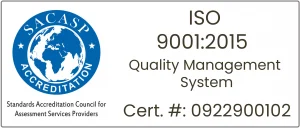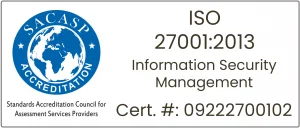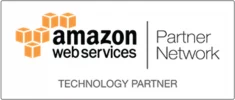B2B transactions have caused businesses to deal with several inconveniences, such as delayed invoicing, lack of integration between different platforms, manual reconciliation procedures, and possible errors. These challenges not only slow down operations but also strain supplier relationships, putting cash flow at risk.
Open Banking has become a ray of hope, transforming the business-to-business payments sector by establishing smooth links between banks and financial service providers through safe APIs. This novel solution enables organisations to handle payments in real time, reducing manual intervention and increasing security.
This new era of financial technology enables businesses to streamline payment operations and build better, more responsive relationships with their suppliers. Companies that embrace open banking tend to establish a future free of outdated payment procedures.
Challenges in B2B Payments
As businesses traverse the global financial environment, the challenges associated with B2B payments become more intricate and multidimensional. Here are the key issues:
Regulatory Changes
The continuously changing regulatory landscape presents a substantial challenge. With the rise of digital banking technologies, B2B payment regulations have undergone significant transformations. Complying with these requirements can be difficult and time-consuming, particularly for SMEs that require effective compliance models to respond to new standards. This issue is exacerbated by the lack of universal regulatory uniformity, which makes it particularly challenging for businesses who operate in multiple jurisdictions
Late Payments
It remains a major risk in B2B transactions. Late payments can hamper cash flows, especially for SMEs, even if European and UK regulations have attempted to address the problem. These delays can arise from the intricacy of payment processes and varied payment conditions, leaving small businesses exposed.
Transactional Speed and Interoperability
Speed is vital in B2B payments, yet traditional payment systems often result in slow processing times. For instance, cross-border payments can take several days due to intermediaries involved and banking hours, leading to increased operational risks. The push for instant payments is growing, driven by customer expectations shaped by B2C experiences, but much of the traditional B2B infrastructure remains slower and less efficient. For instance, these inefficiencies might have a significant negative influence on the operations of a manufacturing facility whose supply chain management mostly depends on on-time payments.
Inefficient Legacy Systems
Historically, many organisations leaned on paper checks and wire transfers to execute B2B payments. Despite their familiarity, these procedures are time-consuming. Paper checks can take several days to arrive at their destination and are frequently processed manually, which causes delays and increases the possibility of errors. Similarly, while wire transfers are faster than checks, they need manual entry of recipient information and transfer amounts, which allows for human mistake and fraud.
Fraud and Identity Verification
SMEs face heightened risks in fraud and identity verification processes. Unlike B2C scenarios where “Know Your Customer” (KYC) processes can be straightforward, “Know Your Business” (KYB) procedures are more complex, involving substantial data management. This complexity is magnified in cross-border transactions where regional differences in regulatory practices come into play.
Cost Transparency
Since international B2B payments are disguised by a number of intermediary fees and exchange rates, it is challenging for SMEs to accurately forecast and budget for the costs associated with cross-border payments.
Limited Visibility and Control Over Cash Flow
Businesses frequently fail to track when payments are sent, received, or cleared, making them susceptible to cash flow interruptions. This restricted visibility complicates financial forecasting, limiting decision-makers’ capacity to strategise effectively based on present and predicted capital.
Financial Inclusion Challenges
If an SME seeks to engage with suppliers in regions where many individuals are unbanked, they face hurdles in establishing effective payment processes. This lack of banking infrastructure can push potential partners away from engaging with businesses unable to meet their payment needs promptly.
Empowering B2B Payments Through Open Banking
By leveraging shared financial data, open banking enhances the efficiency, security, and financial analytics capabilities of SMEs throughout the payment process. Below, we outline how open banking aids SMEs from the onboarding process through to varied payment solutions, detailing each key facet systematically.
Onboarding Process
Identity Verification and Know Your Customer
Open banking makes the onboarding process easier by allowing SMEs to use third-party applications that verify their identities and validate key information. By automating KYC procedures through the APIs, banks and other FIs can significantly cut down on the amount of time and paperwork required.
- Automated Data Retrieval: With permission, banks can access a SME’s banking data, speeding up data collection significantly.
- Dynamic Risk Profiles: Open banking enables the creation of real-time risk profiles based on transaction history and behaviors.
Financial Profile Establishment
Through open banking APIs, financial institutions can access SMEs’ historical transaction data, which helps build a comprehensive financial profile. This profile can include:
- Income Verification: Instant confirmation of income sources through access to bank statements.
- Expense Analysis: Understanding typical expenses enables better predictions of cash flow and operating costs.
Lending and Credit Assessment
Affordability Checks
SMEs can benefit from enhanced affordability checks powered by open banking. Financial institutions can analyse real-time spending patterns and determine the repayment capabilities of a business for loans or credit facilities.
- Data-Driven Decisions: This leads to more accurate evaluations, reducing the risk of nonperforming loans.
- Predictive Analytics: Access to enriched data allows lenders to develop models that predict future financial health and risks accurately.
Credit Scoring Improvements
Open banking facilitates a more nuanced approach to credit scoring. By assessing accurate financial data, lenders can offer better terms or avoid lending money to high-risk borrowers.
Cash Flow Management and Financial Optimisation
Instant Payment Initiation
Open banking enables SMEs to authorise third-party payment initiation straight from their bank accounts, hence improving cash flow management.
- Instant Account Transfers: This function drastically reduces settlement delays, allowing for speedier payments to suppliers and increased liquidity.
- Bulk Payment Capabilities: SMEs can make bulk payments via APIs, which saves time on payment processing.
Expense Tracking and Management
Businesses can use open banking technologies to track their expenses in detail and categorise them (for example, utilities, payroll, and inventory). This leads to improved financial insights.
- Custom Reports: SMEs can generate detailed financial reports using real-time data to inform strategic financial decisions.
Improved Payment Options
Request to Pay
Customers’ payment experiences are improved by this creative payment model, which enables SMEs to issue requests for payments including due dates and amounts through a variety of channels.
- Merchant Benefits: It eliminates the need for intermediaries and enables direct debit payments from consumer accounts, lowering transaction costs.
Automated Payment Services
Open banking simplifies the management of recurrent payments. SMEs are able to automate payment collections through the use of Virtual Account Numbers (VANs) and related technology.
- Improved Tracking Capability: SMEs can effortlessly keep an eye on and handle customer subscription payments.
Transaction Reconciliation
Automated Reconciliation
- Open banking makes reconciliation easier by integrating bank statement data directly to accounting software. This enables businesses to:
- Quickly match deposits and withdrawals to invoices and payment requests.
- Highlight any inconsistencies so that errors can be corrected before they have an impact on cash flow.
- This automatic reconciliation boosts operational productivity by reducing the amount of time spent on manual accounting tasks.
Risk Management and Compliance
Anti-Money Laundering Verification
Open banking offers thorough AML checks, allowing FIs to analyse the risk associated with each SMEs.
- Fraud Prevention: By comparing customer identities with transaction patterns, banks can examine a company’s transaction history to spot possible threats and fraudulent activity
Improved Regulatory Compliance
With digitalisation and automation, open banking enables SMEs to comply with financial requirements without requiring extensive manual effort.
Personalisation of Financial Services
Tailored Financial solutions
With thorough insights into spending habits, SMEs can access innovative financial tools and services provided by various fintech companies tailored to their specific needs. This enables seamless integration with accounting software, which automates tasks like tax preparation and financial reporting.
Upselling and Cross-Selling Opportunities
Understanding consumer spending habits enables FIs to offer suitable products and services, hence improving the overall financial ecosystem for SMEs.
Enhanced Security
- Strong Customer Authentication is a critical component of Open Banking APIs, requiring organisations to validate user identities before providing access to sensitive financial data.
- By combining a user’s instruction (such as a password), possessions (such as a mobile device), or identity (biometric data), multi-factor authentication lowers unwanted access and fosters trust, enabling businesses to explore cutting-edge banking solutions without sacrificing security.
Role of ISO 20022 Messaging Standard's in B2B Payments
- Creates a standardised language for financial communication, reducing complications and errors caused by diverse data formats.
- Enables Smooth Data Exchange: Allows data to flow seamlessly across multiple systems and platforms in Open Banking ecosystems.
- Improves Richer Data and Transparency: Supports structured data, such as specific information on the parties involved, invoice details, and remittance information.
- Allows for straight-through processing and automatic reconciliation,which reduces manual intervention and saves time and resources.
- Enhances the usage of APIs in Open Banking by allowing third-party providers to offer novel B2B payment solutions.
The Future of B2B Payments in the Open Banking Era
With the advent of B2B payments, B2B payments are expected to develop into a highly automated, secure, and interconnected environment.
This entails the integration of real-time payment rails (such as instant payment systems), standardised APIs (for smooth data sharing), distributed ledger technology (for improved security and transparency), standard messaging format (ISO 20022) and AI-driven automation (such as reconciliation and fraud detection).
This will enable capabilities such as automated invoice processing, dynamic discounting, and quick settlement, resulting in increased cash flow, lower expenses, and greater security.
To Wrap up
As businesses deal with an increasingly competitive market, implementing Open Banking solutions provides a compelling opportunity to stay ahead. Businesses that embrace this revolutionary technology can optimise their financial operations, gain real-time data insights, and eventually contribute to growth. Businesses are encouraged to explore the Open Banking options available especially Macro Global’s Tavas, the Open banking product suite, and examine how they may be integrated into their current payment strategy.
Discover how Open Banking is transforming B2B payments
Tavas
Open Banking Product Suite and Solutions
Discover how Open Banking is transforming B2B payments
Tavas
Open Banking Product Suite and Solutions
Related Posts
Best Practices & Strategies Guide for Asset Management & Investment Firms Generate FSCS SCV Reports
Learn how asset management firms can effectively manage their FSCS compliance obligations through robust SCV reporting strategies.
Navigating the Future of Digital Wallets Amid Big Tech Challenges
Discover how Digital Wallets are transforming payments, the challenges they face, and what the future holds for secure digital transactions.
Defining Your Regulatory Roadmap: Technology, Data Compliance, and Security
Create a sustainable compliance strategy that positions your FI's for long-term success. Learn how to anticipate regulatory changes, leverage technology, and build a resilient compliance framework.

















